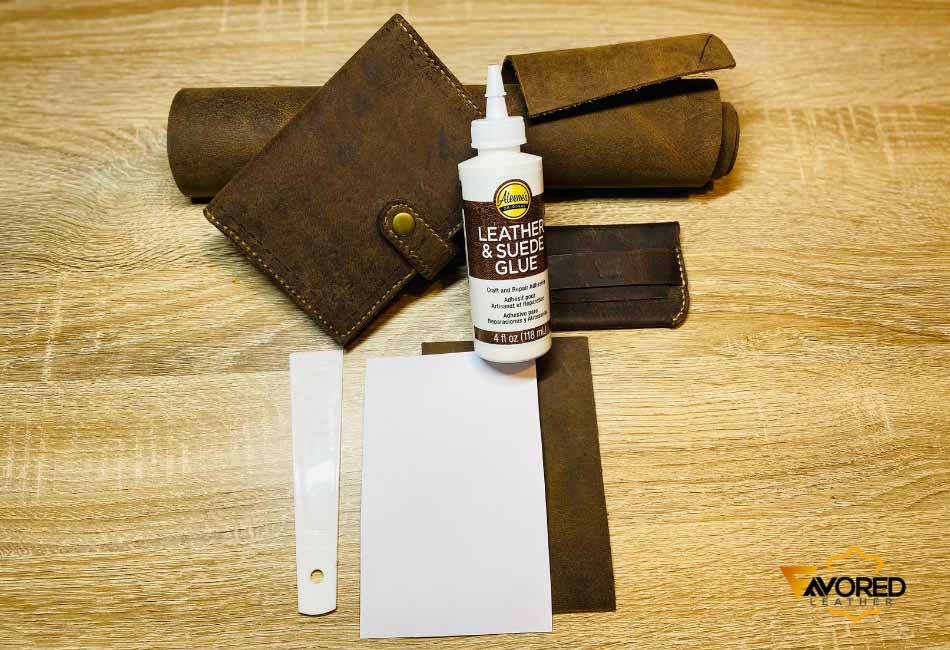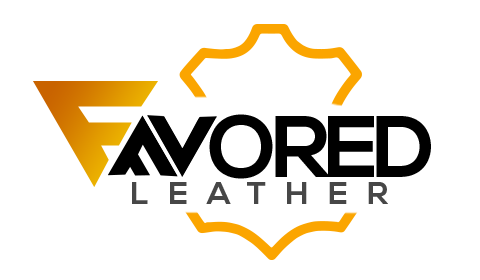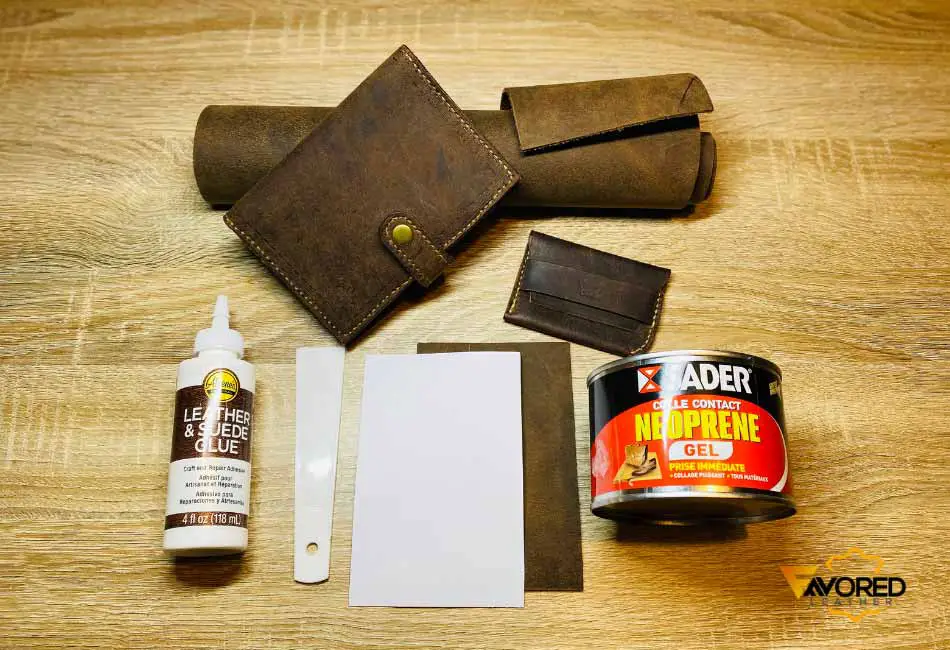There are a lot of glues on the market today, but not all of them can effectively bond leather to cardboard. So what are the best glues you can use for your leather-to-cardboard bonding?
The best glue for leather-to-cardboard bonding are;
- Aleene’s Leather & Suede Glue (Best Flexible Drying Glue)
- Elmer’s Glue (Overall Best & Safe Option)
- Lineco Books PVA Glue (Best Glue For Book Binding)
- Scotch Quick-Drying Tacky Glue (Best Precision Tip)
- Gorilla Glue (Best Most Versatile & Waterproof Glue)
For the remaining parts of this article, I’m going to show you some important factors to consider when choosing the best glues for your cardboard-to-leather bonding, my battle-tested glues that will make your cardboard and leather projects a success no matter your skill level, and their pros & cons.
Best Glue For Cardboard To Leather – Buying Guide
Here are a couple of things you would want to look out for when it comes to getting the best glues for your cardboard-to-leather bonding.
The first important factor is the type of glue and the qualities it has to offer so that you can have the right kind of bonding for your projects or repair works.
Types Of Glues For Bonding Cardboard To Leather
The best types of glue for bonding cardboard to leather are white glue and contact cement glue.
White Glue
A German chemist by the name of Fritz Klatte invented white glue in 1912. As irrelevant as this is, I felt it was a cool piece of information to through in here. But enough!
It has since become one of the most common and best glues for a host of materials, including cardboard and leather.
Generally, the best type of glue for cardboard to any type of material is white glue. The white glue is also marketed as PVA glue, which is Polyvinyl Acetate.
There are a host of other different reasons why white glue is great for leather-to-cardboard bonding. One of such main reasons is that it creates a very strong bond between both materials.
With both cardboard and leather being very porous materials, white glue is able to penetrate the pores of the cardboard and leather for deep and strong adhesion.
Another reason why white glue is simply one of the best glues for leather to cardboard is that it’s not messy. This is because almost all white glue dries clear and will not leave behind any form of stains.
This simply means that glue becomes transparent when dry.
White glue is also very easy to work with, even if you’re a complete beginner. You can even dilute white glue with water to make it a lot easier to apply and control.
Also, white glue does not contain any toxic vapors, and it’s not flammable. More importantly, white glue is cheap and budget-friendly.
Contact Cement
White glue is great for bonding cardboard to leather, but in other cases, you will find that it may be more convenient to use some other types of glue.
So apart from white glue, another type of glue that’s great for cardboard-to-leather bonding is contact cement glue. This type of glue is going to offer the cardboard and leather a highly durable bond.
Contact cement is an adhesive that offers a very firm bond, and it’s one of the most versatile glues.
Contact cement glues have a unique quality that allows them to offer the most durable bond for any type of material.
Contact cement adhesives must be allowed to dry completely before bonding.
The way contact glues are used is completely different from how most other glues, like white glue, are used.
For example, when bonding cardboard to leather, you must first apply the contact cement adhesive to both surfaces of the leather and the cardboard and then leave the glue to dry first before both surfaces are attached.
This makes contact cement adhesive the best for bonding the most smooth surfaces.
Because of its share durable bond, you can also use it to bond cardboard or leather to other materials such as glass, metal, wood, stone, plastic, rubber, etc., as long as they are indoors.
If you decide to use it as an adhesive for cardboard, keep in mind that it does not resist humidity or heat.
Warning: The contact cement is highly inflammable. Also, always ensure to use the contact cement in a well-ventilated place.
So, all in all, the best type of glue you pick out for your leather-to-cardboard bonding, whether from this list, an online shop of your choice, or a brick-and-mortar store, should be either a contact adhesive or white glue.
Best Glue For Leather To Cardboard – Reviews
Here’s a review of some of my battle-tested glues for leather-to-cardboard bonding.
1. Elmer’s Glue (Overall Best & Safe Option)

Elmer’s Craftbond Tacky Glue is my overall best glue and also the safest glue for cardboard-to-leather binding.
Elmer’s Glue is a multipurpose glue suitable for both beginners and professionals.
It comes in slender packaging that makes it very easy to store. It has a pointed tip that allows you to fasten glue into very small crevices or precisely outline the glue to edges when you’re doing your leather-to-cardboard bonding.
What’s even more, Elmer’s Glue, with its special formulation, is a non-toxic and very safe product.
The best thing about Elmer’s Glue is that it has a wet consistency that does not run but provides you with a long-lasting hold suitable for all kinds of projects.
Last but not least, this glue also dries clear and works amazingly well on both porous and semi-porous surfaces.
Pros
- Multipurpose
- Non-toxic
- Very easy to use
- Not suitable for use on heated surfaces
- It’s very easy to clean with water
- Dries clear
Cons
- It’s more of a lightweight usage glue
If you’re interested in Elmer’s Craftbond Tacky Glue, you can check it out over here on Amazon for any additional information you may need.
2. Lineco Books PVA Glue (Best Glue For Book Binding)

The Lineco Books PVA Glue is my pick for the best glue if you do a lot of bookbinding that involves using cardboard and leather.
It’s a neutral adhesive that is great for bonding any paper-based materials to cardboard and cardboard to both synthetic and natural leather when bookbinding or working on a craft project.
One of the best features of the Lineco Books PVA Glue is that it’s strong enough to bind cardboard to leather and other types of materials without soaking through the cardboard.
The Lineco Books PVA Glue works great on a variety of surfaces and comes in a nice resealable bottle that makes its use very convenient.
Pros
- Acid-free
- Water-soluble or water-based
- Dries clear
- Fast-drying formula
- Very easy to use
- Leaves no glue stains due to its non-yellowing properties
- It can be used to seal or patch crevices easily
Cons
- It may not work on very thick cardboard and leather
If you’re interested in the Lineco Books PVA Glue, you can check it out over here on Amazon!
3. Scotch Quick-Drying Tacky Glue (Best Precision Tip)

The Scotch Quick-Drying Glue is my pick for the glue with the best precision tip. It comes in a standard 4 oz container bottle that makes it very easy to hold and use for a long time without fatigue.
One of the biggest advantages of the Scotch Quick-Drying Glue is its precision tip. In that, it helps you to apply the exact amount you want without wasting any of the product.
The glue itself is also great for how fast (less than a minute, to be precise) it bonds things to cardboard.
Another great thing about the Scotch Quick-Drying Glue is that it has excellent consistency, so it’s not runny, nor does it bleed through materials.
The materials it’s applied to, no matter how soft or delicate it is will not soak up or cause them to wrinkle. Instead, the material will remain the same with a solid and durable bond.
All in all, you will be able to carry out any of your projects that involve using materials such as cardboard, leather, paper, and foam core with a lot of ease and precision without wasting any glue.
Pros
- Precision tip
- Cost-effective
- No wastage
- It’s not runny
- Dries clear
- Bonding time is usually less than 1 minute
- It does not cause materials to wrinkle
- It’s great for Cardboard, Leather, Plastics, Ceramics, Papers, Metals, etc.
- It comes with a tight-seal cap, so there are no dry-outs on the tip
Cons
- The glue is a little thick for some applications
If you’re a student or a professional and would like a fast bonding glue that comes in a very nice and presentable bottle for your art and craft projects, then you can check out the Scotch Quick-Drying Glue over here on Amazon!
4. Gorilla Glue (Best Most Versatile & Waterproof Glue)

The Gorilla Clear Glue is my pick for the best, most versatile, and waterproof glue for cardboard-to-leather bonding.
Although leather and cardboard-made items will generally not be allowed to mingle with water, you would want the type of glue you use to withstand the test of time when it happens to encounter water or any form of liquid.
The Gorilla glue brand is one of the most popular glues and well-known glues on the market today.
This brand is known for its quality and is usually the safest bet if you want glue that hundreds and thousands of people have used and have absolutely loved.
The best feature of the Gorilla Clear Glue is its massive bonding strength. This feature means that this glue can be used on any kind of material, including even the most sensitive and delicate materials such as cardboard, leather, and paper.
It’s indeed highly versatile and an incredibly strong glue that is very easy to use both indoors and outdoors.
Pros
- It’s water-resistant
- It’s a very popular glue
- Fast drying and fast curing time
- It’s highly versatile
- It comes in a nice resealable bottle
- It’s also weather-resistant
- You can sand, paint, and stain this glue after its application
- Dries crystal clear
- It’s a non-foaming glue
- It offers an incredibly durable bond
- It’s very easy to use
Cons
- A bit pricey if you’re on a budget
If you’re interested in the Gorilla Clear Glue, you can check it out over here on Amazon for additional information and pricing.
5. Aleene’s Leather & Suede Glue (Best Flexible Drying Glue)

Aleene’s Leather & Suede Glue is my final pick for the best flexible drying glue that you can use to bond the most flexible and thin materials without compromising the original flexibility of those materials.
Aleene’s is also one of the most trusted all-purpose craft adhesive brands on the market today, and it’s no surprise this glue has been around for more than 50 years.
Aleene’s Leather & Suede Glue is an original tacky glue that works great for almost every type of surface.
The thing about Aleene’s Leather & Suede Glue is that it’s non-toxic and safe for kids, beginner crafters, professionals, DIYers, and everyone else in between.
Its consistency is very thick and tacky, which helps this glue to grab easily and bond anything it’s applied to and offers a permanent bond.
This glue comes formulated to be able to bind the thinnest and most flexible fabric materials without an issue while retaining the flexibility of the material.
Pros
- Dries clear and flexible
- It’s non-toxic
- It comes in an easy-to-use bottle
- It’s resealable and very easy to squeeze bottle
- Offers a quick dry tack
- Super strong and permanent bond
- It’s a versatile glue
- It’s very easy to clean glue stains with water and soap
Cons
- A bit pricey for those on budget
If you’re interested, you can check out this glue over here on Amazon!
General Tips for Using Glue Safely
- You would always want to ensure you use glue in a well-ventilated place. This is because fumes and smells from glues, when inhaled, can cause fatigue even without you knowing.
- Always wear rubber gloves when gluing. One important trick when it comes to choosing rubber gloves is to consider thicker gloves for stronger glues. This will help prevent skin irritations, glue stains, and your fingers from gluing together.
- If your fingers get stuck with any fast-drying glue or superglue, soak them in warm soapy water. If it doesn’t help, try wiping the area with some acetone (nail polish remover should be fine). Then separate the fingers carefully without damaging your skin.
- Pick the right glue for the right purpose. Although there are a lot of glues you can choose for your leather-to-cardboard bonding, this post highlighted the best ones for specific purposes to get the best performance.
- One of the basic qualities apart from the quality of the bond is that the glue you pick out should be either water-resistant, weather-resistant, or both, if possible.
- You also want to find out the color the glue dries in. While some glues dry clear, others will dry whitish or even yellowish. This may not be necessary if you’re going to paint over the glue later after application.
- As far as storage goes, you would want to ensure proper storage of your glue so that it lasts long without losing its bonding qualities or drying up.
- A good and basic rule of thumb is to always clean any excess glue from the tip or opening of the glue container or tube.
- Especially for glues in tubes, you would want to ensure you always squeeze out any extra air pockets from the tube before sealing it.
Conclusion
In this post, I showed you some important factors to consider when picking out the best glue for your cardboard-to-leather bonding. I also highlighted 5 of the best glues you can choose for your cardboard-to-leather bonding.
I took my time to select glues I, together with other industry experts, talk about and use to help make your choice for the best glue for your cardboard-to-leather bonding much easier and fast.
What’s even great about my picks is that these glues are all versatile, so you can also use them outside cardboard for leather bonding.
I hope this guide helps you find suitable glue for your cardboard and leather craft projects, no matter your skill level or proficiency.

